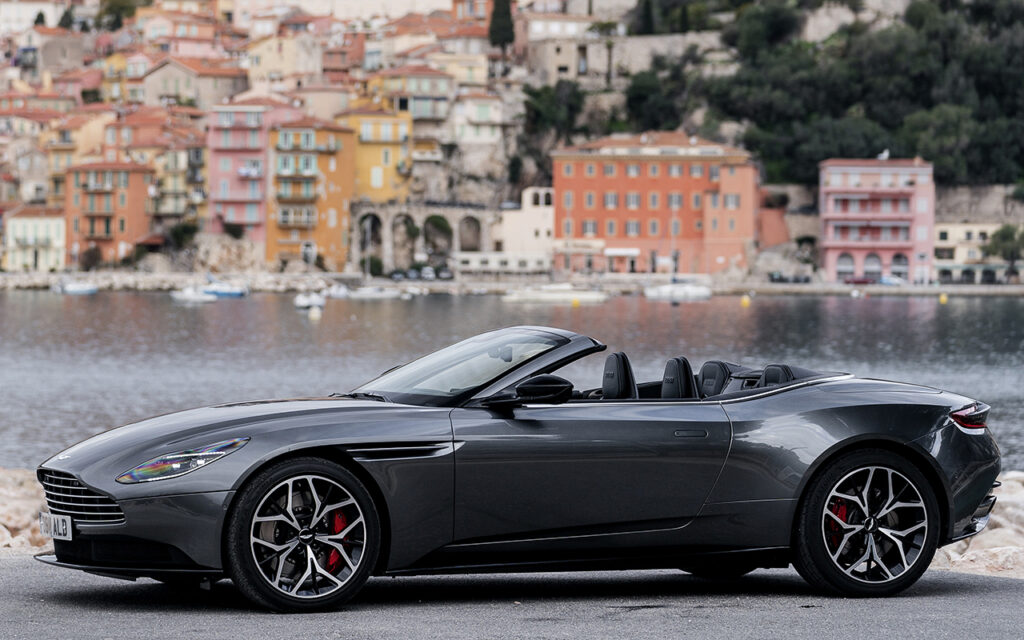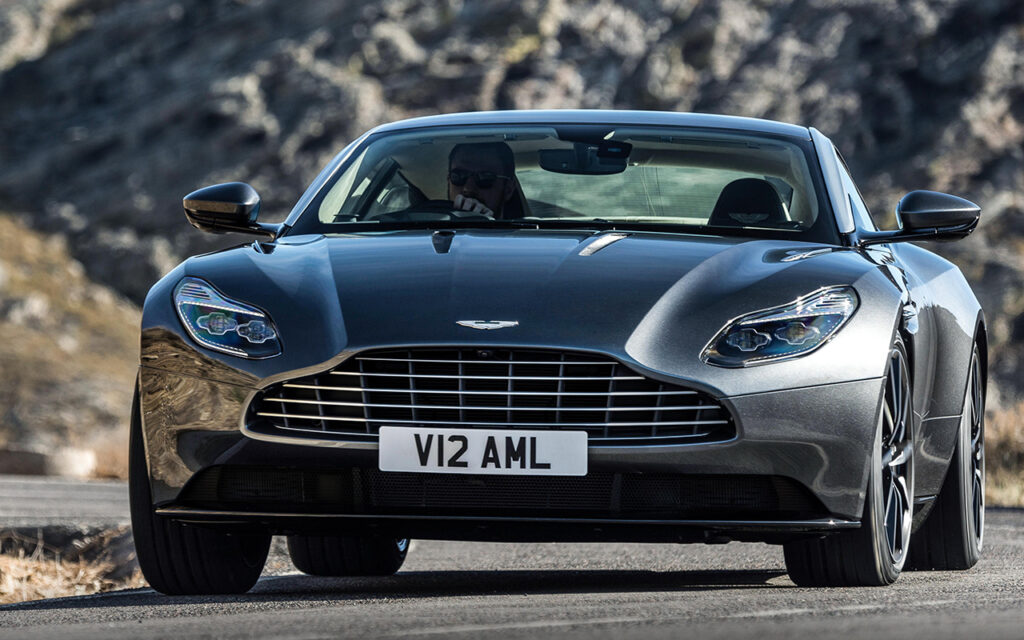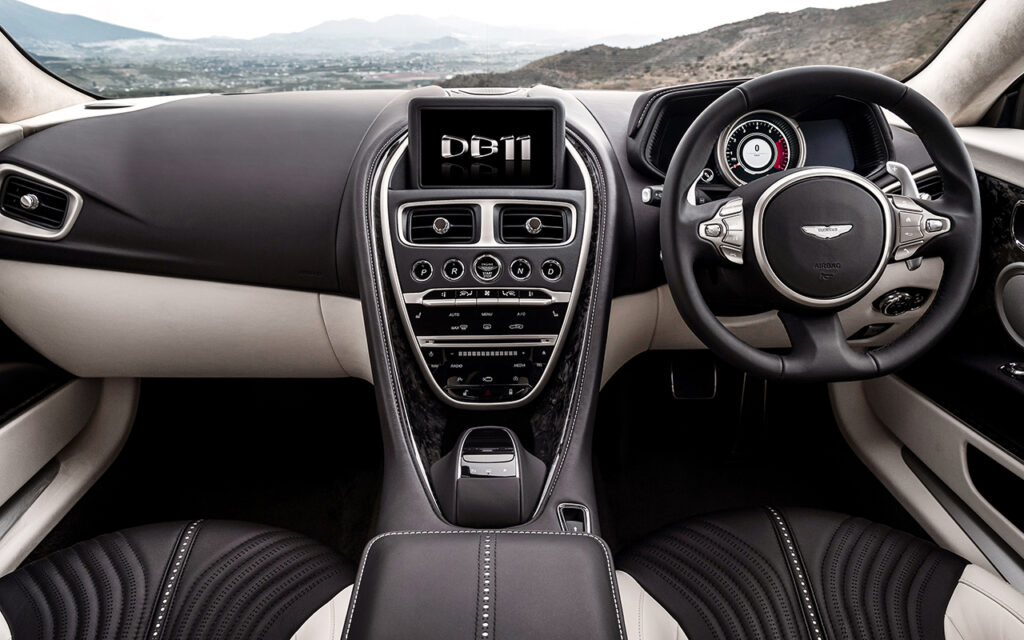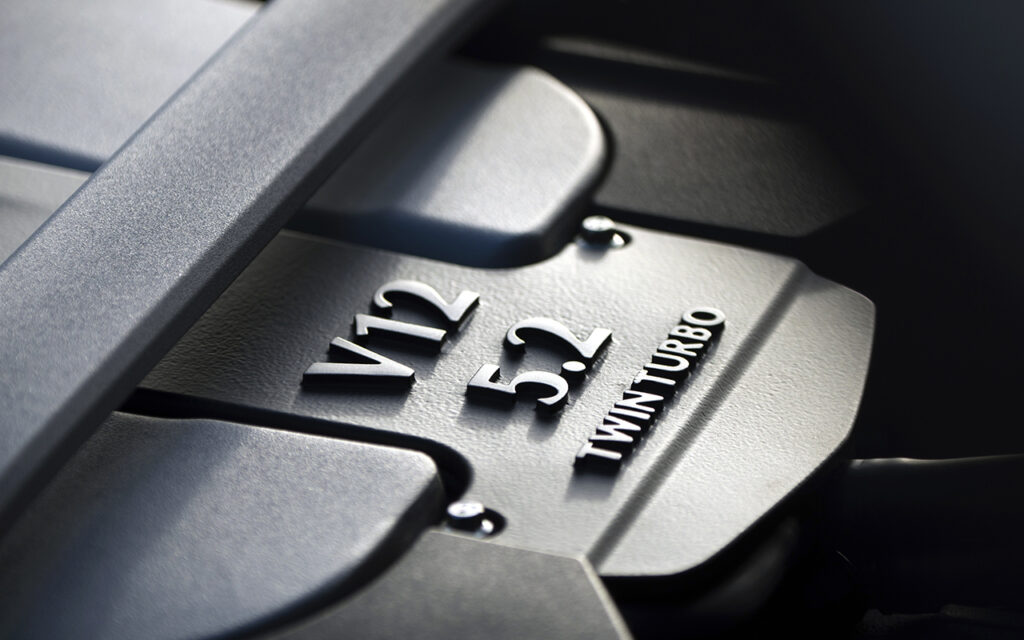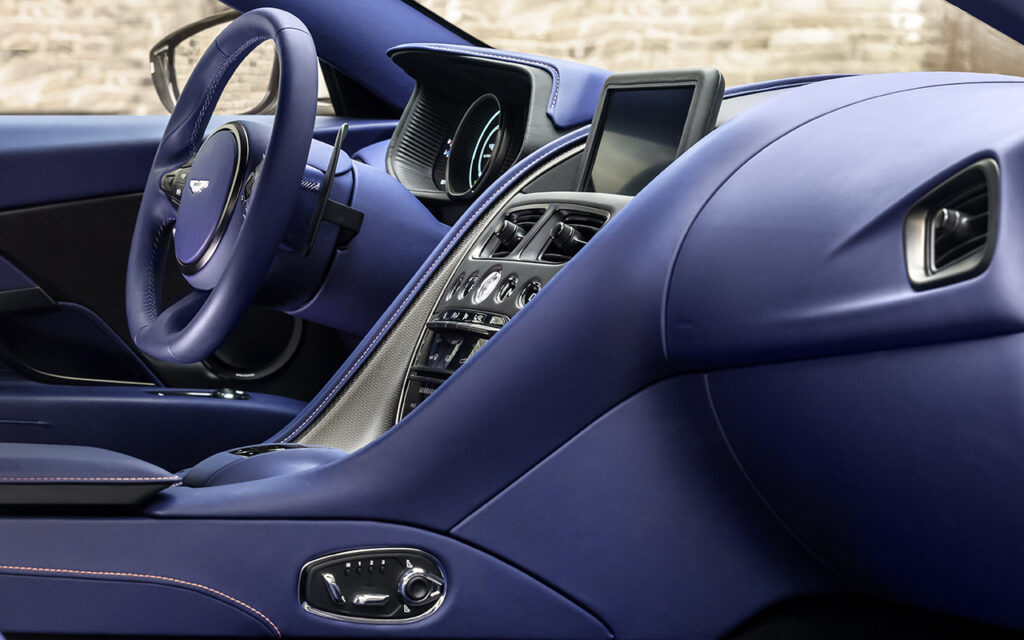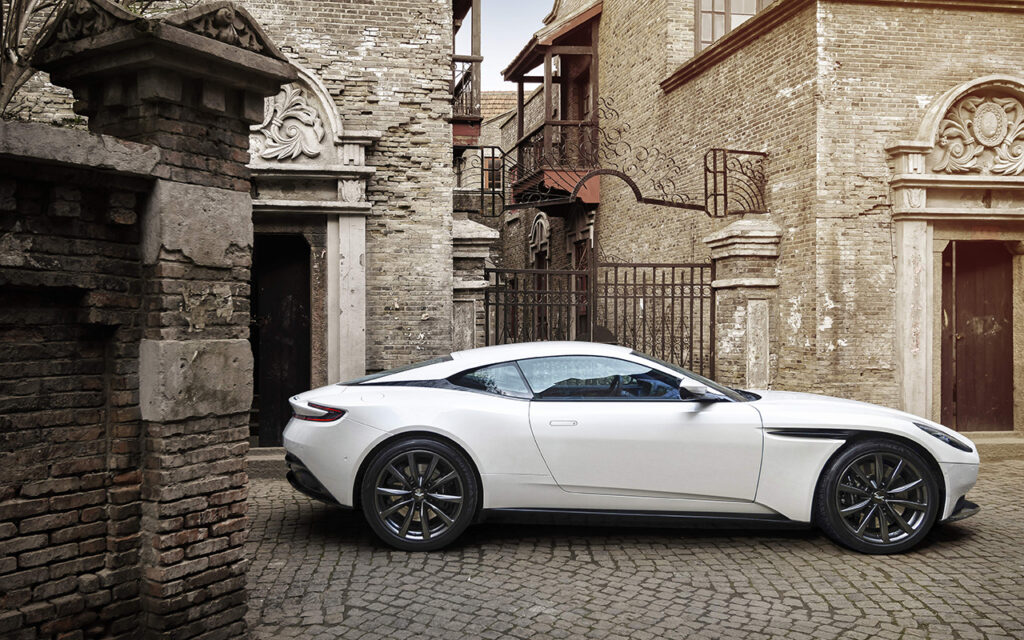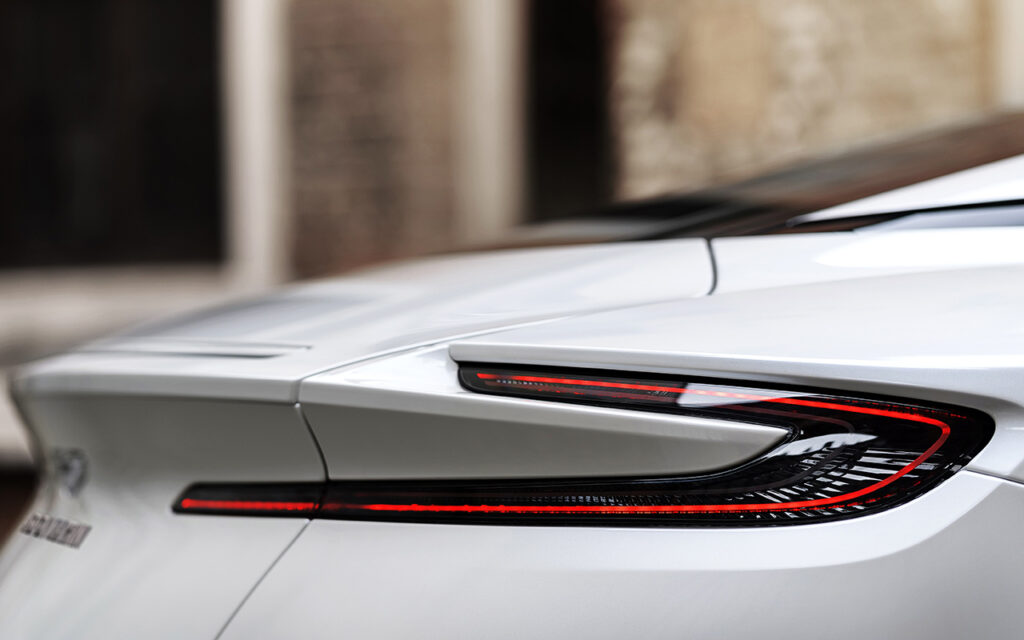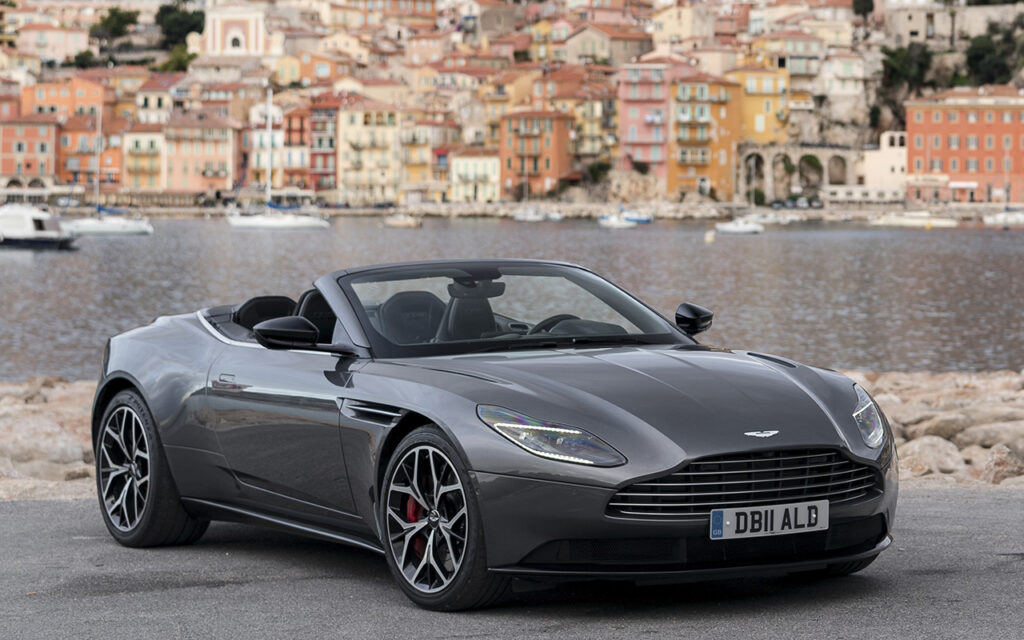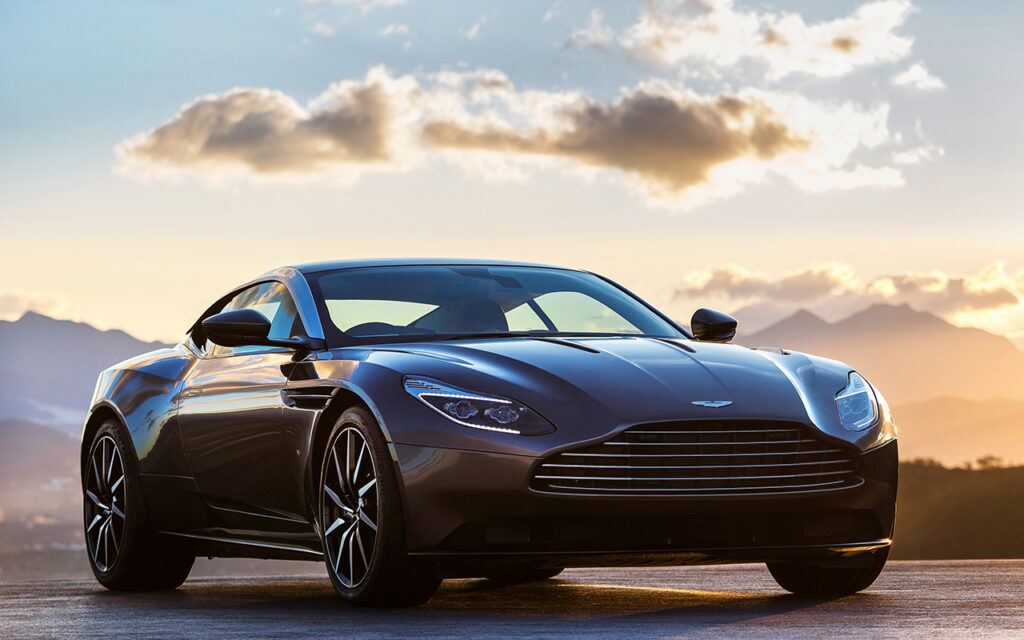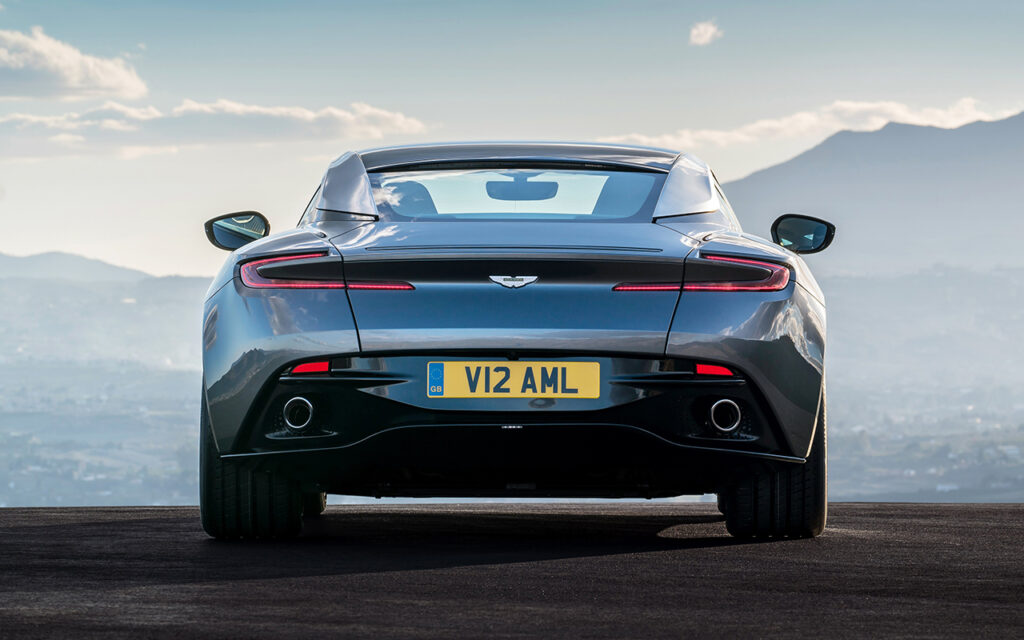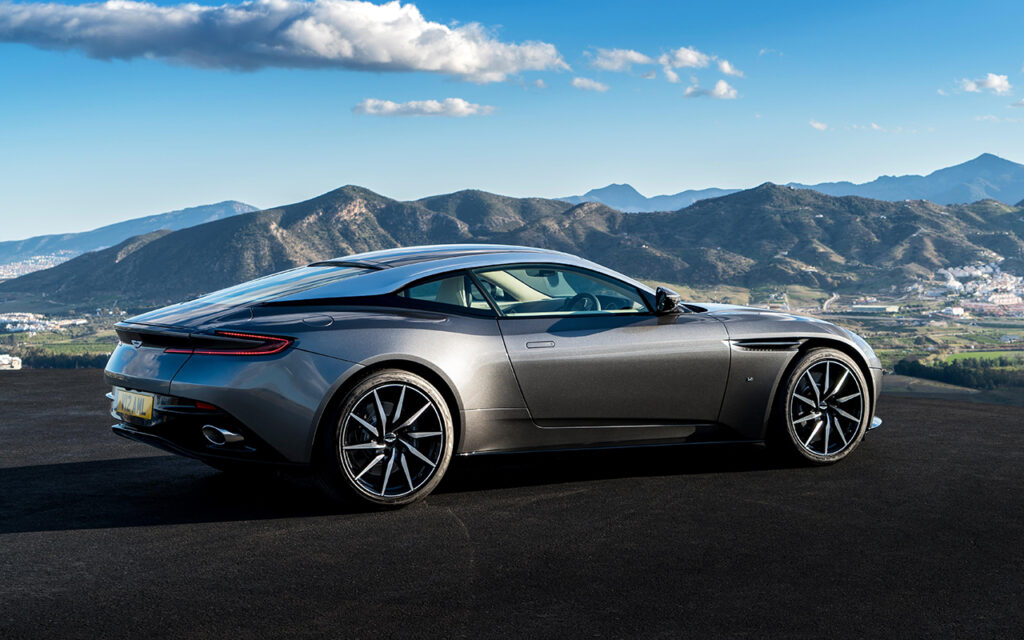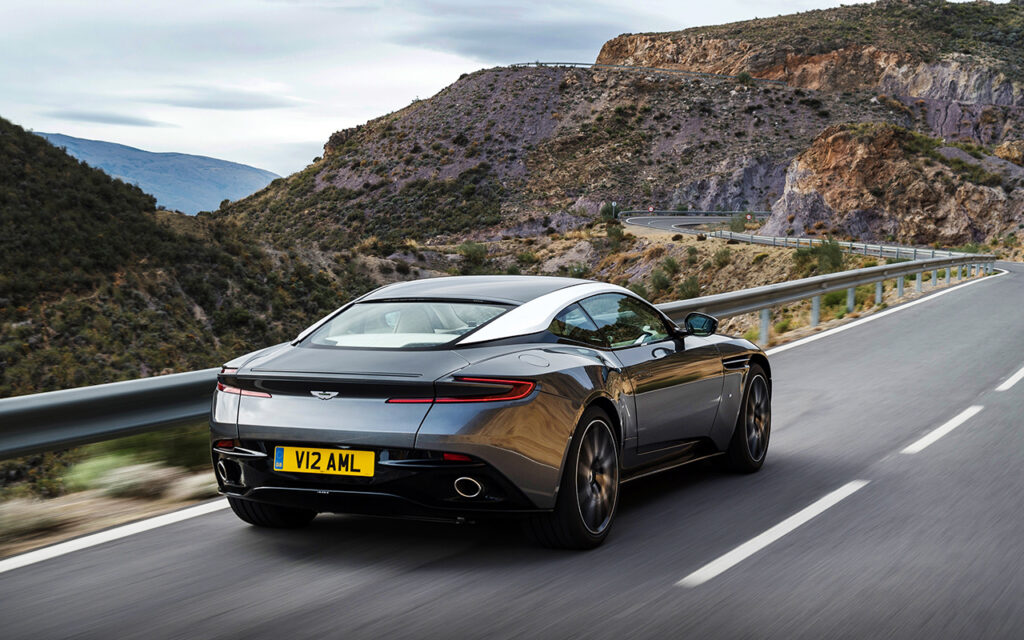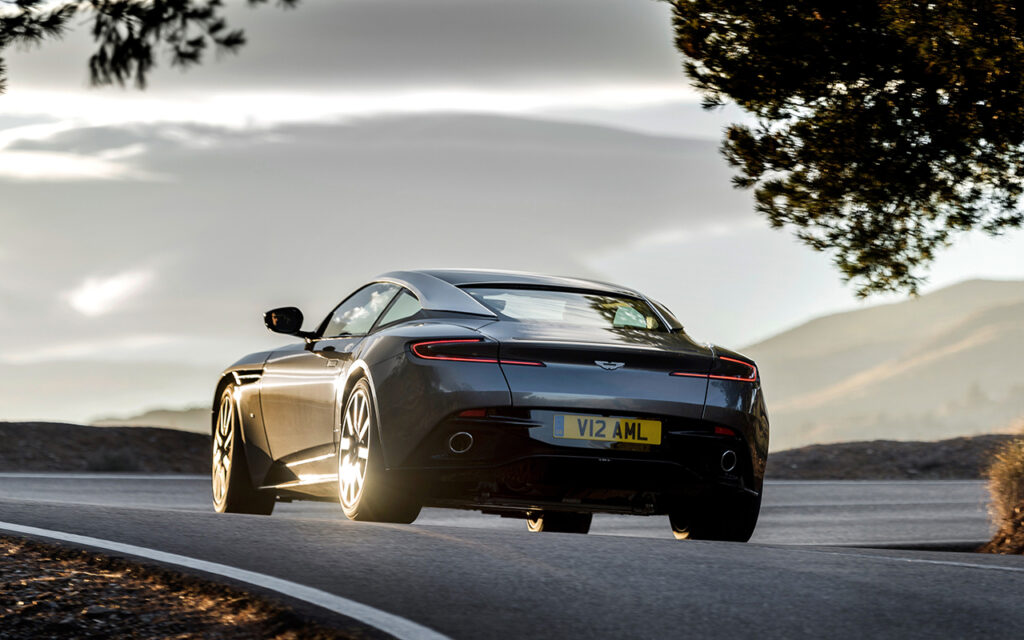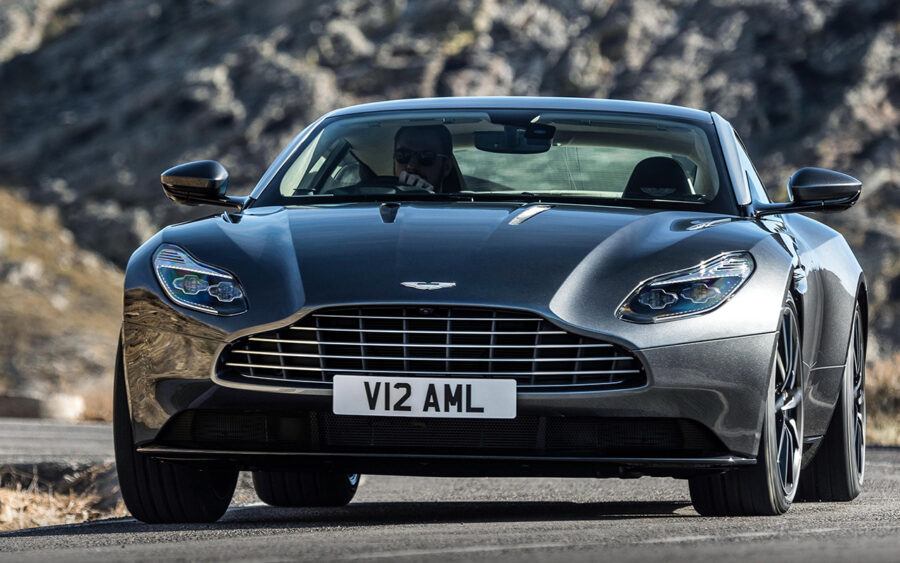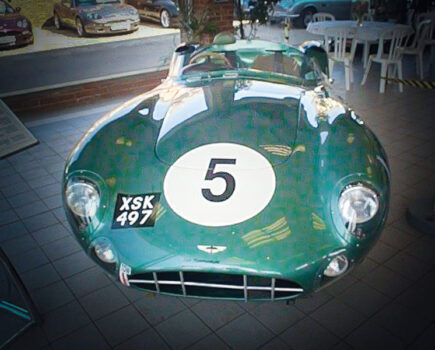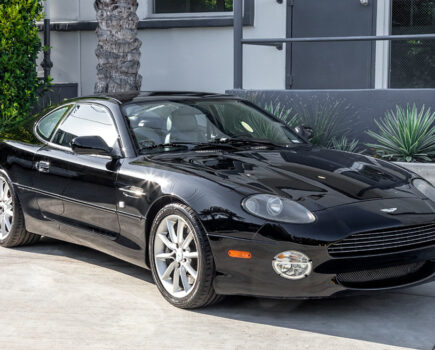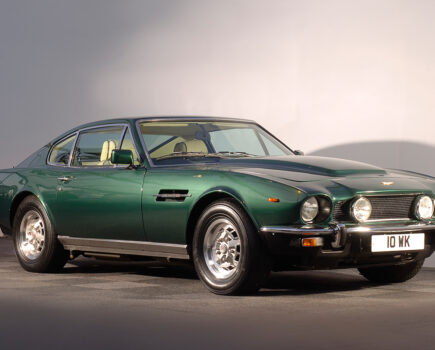The DB9’s replacement had its work cut out when the covers came off in March 2016, with Aston Martin’s focus set on a successful second century
Words: Jon Burgess
Aston Martin was well on the road to recovery; a month earlier, it had secured a new factory in St Athan, Wales, for its upcoming DBX SUV, despite mounting pre-tax losses of £162.8 million.
To understand the DB11’s significance, we need to cast our minds back three years prior, when Daimler AG (Mercedes-Benz) bought a 5 per cent stake in Aston Martin and agreed to supply it with AMG engines and electrics, including in-car entertainment, navigation and heating-ventilation and cooling (HVAC) systems. Out went the Ford-derived V12 and Premier Automotive Group-based subsystems; to that end, the slow demise of the DB9’s VH (vertical-horizontal) platform began having served the company valiantly. VH Generation II – chiefly the V8 and V12 Vantage – lasted until 2018, alongside the Vanquish (2012, VH310). By 2020, it was all over for VH, as the last Rapides left Magna Steyr in Austria.
2013 also saw a new chief executive officer replace Dr Ulrich Bez: Dr Andy Palmer, formerly of Nissan. His plans were ambitious for the seven-time bankrupt, then 112-year-old firm: leave VH behind, replace it with two new platforms, create an off-road cross-over, set up a new super (and hyper) car line, use Daimler AG’s parts network to keep cars up to date – and revive its heritage back catalogue. £20 million was invested by Aston to expand its Gaydon facility in anticipation; it sought £200 million the following year from its investors to help pay for the development of new models, including the DB11, production of which was to stay (and still remains) in Warwickshire.
The DB11 was the first product of the Daimler AG union, and where Andy Palmer’s second century plan first bore fruit; with the new car, a new engine, of Aston’s own design, debuted. Unlike the long serving, naturally aspirated, 5.9-litre V12, then 17 years old, the new unit, AE31, gained a pair of turbos to make up for its drop in capacity. Furthermore, new emissions standards made the storied Cosworth V12 unviable; its 5.2-litre, 600bhp replacement still drove the rear wheels, but now through an eight-speed ZF transaxle automatic. DB11, or AM5, was the first twin-turbo Aston to make it into production; the firm had experimented with forced induction in the early Eighties, but the Lagonda Turbo and Bulldog remained one-offs.
A 2+2 GT at heart, one of the key objectives for the DB11 was to offer more cabin space over the DB9. To that end, the new base of the DB11, made from riveted and glued aluminium stampings, offered a 65mm longer wheelbase, more headroom (to the tune of 54mm) and an 87mm increase in legroom. It was the first DB car for a new generation capable of 200 mph; a ‘second century’ plan, indeed! Former Lotus staff, now employed in Gaydon, made the most of their experience, imbuing the DB11 with supple, adaptive damper suspension that was better suited to a GT remit.
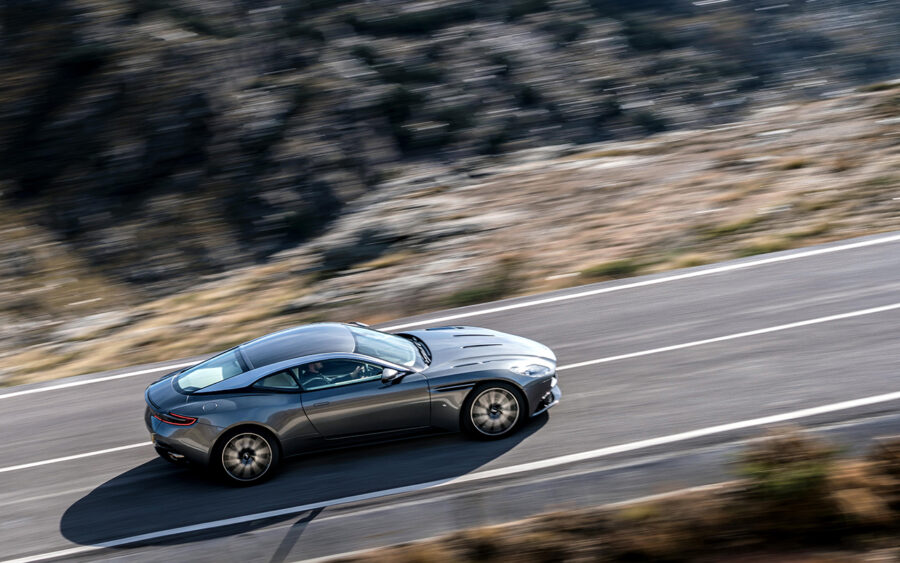
An AMG V8-engined variant, the DB11 V8, arrived in 2017; buoyed by more than 1400 pre-orders at the 2016 Geneva show, the V8 prompted hasty revisions of the V12, which stayed in production for barely 18 months before receiving alterations.
The cheaper V8 was perhaps a bigger threat to the DB11 V12 than Aston realised. With a 503bhp, 4.0-litre, twin-turbo ‘M177’ AMG engine, fractionally better weight distribution and a 115kg difference in weight, performance figures were close considering the difference in price – and customers took notice. It certainly helped push Aston back into the black, selling 5,117 cars by the end of the year and managing a pre-tax profit of £87 million, ending six years of losses.
2017 also saw construction work begin on the ex-MoD ‘super hangers’ in Wales to build the DBX, and the return of Aston’s storied Newport Pagnell Works facility, now tasked with building 25 DB4GT Continuations; a decade prior, it had ceased series production of Aston Martins with a Vanquish S.
A DB11 AMR was made available by May 2018, furthering the performance gap between the now-discontinued DB11 (V12) and the lucrative V8. The AE31 was tweaked to produce 630bhp for the new model, to put some distance between it and the DB11 V8.
Better suspension, a reprogrammed automatic gearbox and lighter, larger wheels distinguished the AMR from earlier V12 models; the first 100 AMRs, known as Signature Editions, were a limited run special with specific paint and trim redolent of the Vantage GTE racing car.
Further additions to the DB11 range took place that year, too. The DB11 V8 was used as the basis for the Volante; with reinforcement adding greatly to its kerb weight, the open car needed all the help it could get. The lighter M177 V8 no doubt helped the beheading – and Aston decided that the Volante do without the V12 for reasons of structural integrity.

The DBS (AM7, nee Superleggera before 2022) also emerged from 2018; based on a modified DB11 platform, it continues to serve as a more powerful successor to the VH Generation II DBS (V12). With the DB11’s AE31 twin-turbo V12 pushed further back in the chassis for a front mid-engined layout, more aggressive styling made the most of ground effects created by diffusers. A Volante was also released.
Times were changing, however; with an uptick in fortunes and the books out of the red, Aston’s owners – the consortium of investors led by Prodrive’s Dave Richards – listed the firm on the London Stock Exchange.
The DB11 was joined in the showrooms in 2020 by the bespoke-platformed DBX crossover off-roader, the St Athan plant which built it completed early in December 2019.
Alas, the coronavirus pandemic did little to arrest another decline in Aston’s fortunes; the firm was forced to raise funds from shareholders three times that year to shore up the business. Demand for luxury vehicles fell, and the damage done by falling DB9 sales up to the DB11’s introduction cost then-CEO, Dr Andy Palmer, his job. The ageing DB9 had struggled to provide the means to fund new model development; to help keep the firm afloat, Palmer oversaw two debt raises, but share value and investor confidence was at an all-time low. Tobias Moers, of Mercedes-AMG, stepped into his seat as shares rose by 40 per cent on the day of his appointment.
Money was still needed; tycoon Lawrence Stroll took a 25 per cent stake in the company in exchange for £182 million, raised through a consortium. By October 2020, with Stroll installed as executive officer, Daimler AG/Mercedes-Benz increased its equity in Aston Martin to 20 per cent – another deal that Palmer initially brokered.
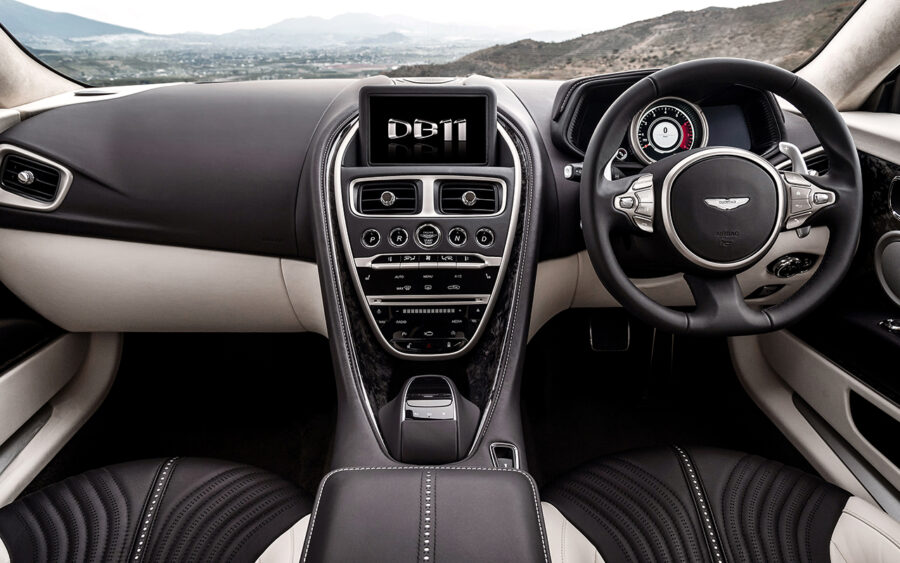
Aston Martin DB11 timeline
2016
DB11 (AM5) revealed at Geneva Motor show, replacing DB9. 6.0-litre, N/A Cosworth V12 and VH platform dropped in favour of a 5.2-litre, twin-turbo V12 and all-new architecture.
2017
AMG-engined DB11 V8 arrives. Cheaper and almost as quick as the V12, its arrival prompts hasty revisions of the DB11 V12.
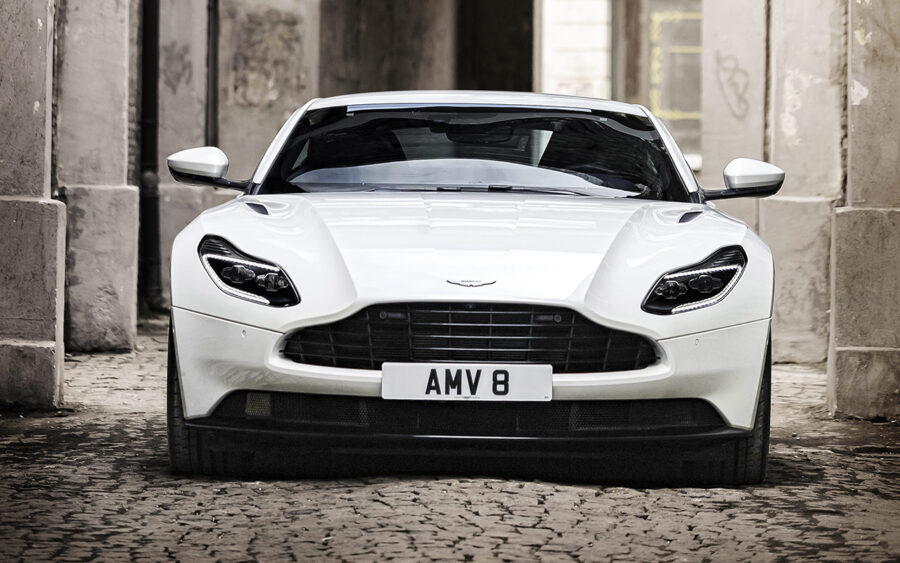
2018
DB11 AMR and DB11 Volante confirmed. DB11 AMR boasts tweaked suspension, a faster gearchange and larger, lighter wheels to differentiate it from the V8. Power goes up to 630bhp; 100 Signature Edition cars launched. DB11 Volante debuts, based on V8 running gear. Vantage (AM6) launches, using same bonded aluminium structure as DB11, but sharing only 30 per cent of components.
DBS/DBS Superleggera (with Volante) also launched.
2020
Aston Martin applies to shareholders three times for investment to keep the firm afloat. Laurance Stroll takes a 25 per cent stake in the company; CEO, Andy Palmer, replaced with Tobias Moers; Daimler AG (Mercedes-Benz) increases equity in Aston Martin to 20 per cent.
2021
AMR badging dropped from DB11 V12; new models incorporate AMR modifications but renamed DB11 V12.
